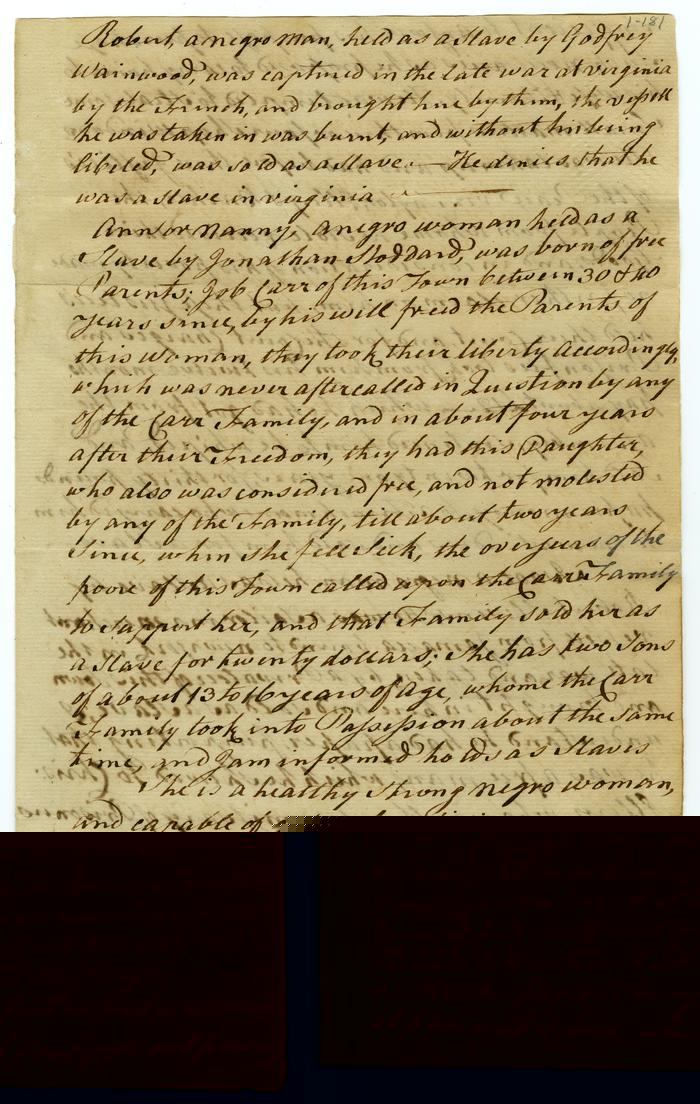Thomas Robinson narratives of free black men and women sold as slaves, 1788
Permanent ID:
9066Date:
September 29 1788Image Description:
Thomas Robinson was a former slave-trader turned abolitionist. He was born to a Quaker merchant family in Newport, RI and was intimately familiar with the Atlantic slave trade. He wrote this document listing several real-life examples of re-enslavement of free black men and women in Newport, RI. He lists the names of the enslaved people along with their owners. The first is Robert who was enslaved by Godfrey Wainwood, Robert was a freeman captured by the French during war and than sold at Newport. Second, is "Ann or Mary" a women born of parents who were freed previously by the Joseph Carr. She apprently became ill and the Carr family sold her to Jonathan Holland to pay for medical care where she remained enslaved. An unnamed free man was enslaved after fighting in the "American army" during the revolution. He was quite poor after the war and stole food from a nearby farm. He was then imprisoned, fined, whipped, and then sold into slavery by "Tayler, Ellery, and Barker." Isaac was owned by Robert Stevens, who had purchased him from a privateer. Isaac was a sailor travelling from Jamaica to New York. His ship was captured by privateers who then sold Isaac, despite his free-papers, in Newport.At the end of the 1700s, Newport was the busiest hub of slave trade in New England. Although the import and export of slaves had been banned in Rhode Island by 1787, the law was poorly enforced, and the number of imported slaves actually increased. As this document exhibits, it was also too easy for free African Americans throughout the United States to be abducted and sold into slavery. Robert was a victim of this state of affairs. After escaping in 1789 from the man he claimed had illegally enslaved him, he was quickly recaptured. Despite the Providence Abolition Society's legal defense, the court ruled in 1791 that Robert was still a slave. Fortunately for Robert, Wainwood agreed to release his claim of ownership if Robert would not appeal the decision, and Robert attained his freedom. Most other cases mentioned in this document did not result in freedom, despite the efforts of abolition societies.
